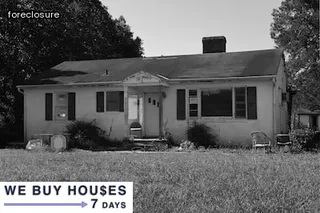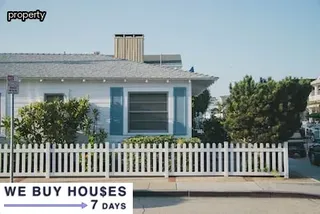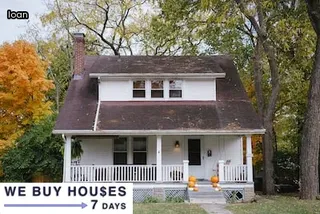Navigating the Oklahoma foreclosure process can be overwhelming, especially for homeowners who are unfamiliar with state laws. It's important to understand the foreclosure laws in Oklahoma in order to protect your rights as a homeowner.
All lenders must comply with the Oklahoma Foreclosure Act, which outlines the steps that must be taken by a lender before they can foreclose on a property. They must send a Notice of Default to the borrower at least 30 days before filing for foreclosure, and then wait an additional 15 days after sending the notice before filing with the court.
The Notice of Default gives borrowers time to work out an agreement with their lender and make payments on their overdue mortgage balance. If no agreement is reached, the lender can proceed with filing for foreclosure with the court.
In addition, all foreclosure proceedings must be done through the court system and not through private sale or auction. Borrowers have certain rights during this process, including being able to challenge any inaccuracies in documents filed by their lender and attending all court hearings related to their case.
It's critical for homeowners facing foreclosure to become familiar with these laws so they can protect their rights throughout this difficult process.

Oklahoma homeowners have access to a wide variety of mortgage loans, including conventional loans, FHA loans, VA loans, and USDA Rural Development loans. Conventional mortgages are available through private lenders and can be used to purchase a primary residence or investment property.
FHA loans offer lower down payments and are backed by the U. Department of Housing and Urban Development.
VA loans are offered exclusively to veterans, active-duty service members, and some surviving spouses who have served in the military. USDA Rural Development loans are designed for low-income borrowers living in rural areas of Oklahoma and provide no-down payment financing options with reduced interest rates.
Understanding the various types of mortgages available in Oklahoma is essential for navigating the foreclosure process.
In Oklahoma, the consequences of missing mortgage payments can be serious. Foreclosure is the process by which a lender reclaims a property when borrowers fail to make payments as agreed upon in their loan agreement.
If a homeowner neglects their financial obligations and fails to make timely monthly payments, they will receive notifications from the lender informing them of their delinquency status and the potential for foreclosure proceedings. The foreclosure process in Oklahoma is typically initiated with a notice of intent to foreclose which must be sent to the homeowner at least 30 days before a foreclosure sale can take place.
After receiving this notice, homeowners still have time to attempt to bring their loan current or negotiate alternative arrangements with the lender. However, if these efforts are unsuccessful and no payments are made, then foreclosure proceedings will continue until the property has been sold at an auction or taken back by the lender directly.
Homeowners should understand that not only may they lose their home but also any equity and credit score points that were built up since taking out the loan. Furthermore, non-payment and subsequent foreclosure could lead to other legal complications including wage garnishment or debt collections actions against them.
It is essential for Oklahoma homeowners facing financial difficulties to carefully consider all options and seek professional advice as soon as possible in order to avoid negative outcomes such as foreclosure.

When navigating the Oklahoma foreclosure process, one of the first steps homeowners must take is to understand breach letters. Breach letters are sent by lenders when a borrower fails to make their mortgage payments on time or in full.
These letters serve as an official notice that the lender is preparing to take legal action if no payment is made. It also provides information about any fees or penalties associated with late payments and gives the homeowner a chance to catch up on their payments before further action is taken.
Understanding these breach letters can be critical for homeowners in Oklahoma who are trying to avoid foreclosure and protect their rights under state law.
Foreclosure is a legal process that begins when a lender decides to reclaim a property from a borrower who has failed to make their mortgage payments for an extended period of time. In Oklahoma, the foreclosure process can vary depending on the type of loan used, so it’s important for homeowners to be aware of the specifics surrounding their particular loan agreement.
Generally speaking, however, lenders will begin foreclosure proceedings after four missed payments have been made in a row and remain unpaid. At this point, the homeowner will be sent formal notification of the lender’s intention to repossess the property and may then be given up to 10 days before any action is taken by the lender.
If additional payments are not received within this timeframe or if an alternative arrangement cannot be made between the homeowner and lender, foreclosure proceedings may continue. It is important for homeowners facing potential foreclosure in Oklahoma to contact their lender as soon as possible in order to discuss payment options and find out more about how long they have before foreclosure begins.
By understanding when foreclosures begin in Oklahoma, homeowners can take steps towards avoiding them altogether.

Oklahoma homeowners are subject to two distinct processes when facing foreclosure: judicial and nonjudicial. Judicial foreclosure is the most common method used in Oklahoma and involves filing a lawsuit against the homeowner to establish their default on repayment of the loan.
Nonjudicial foreclosure, also called power of sale, does not require a court hearing and instead allows the lender to sell the home at public auction. It is important for homeowners to understand how these two processes work as well as their rights under state law when navigating either path.
In general, judicial foreclosures are slower than nonjudicial foreclosures but can provide more protection for homeowners. This is because with judicial foreclosures, homeowners have a right to dispute claims of default and can potentially appeal any judgment made against them in court.
Furthermore, they may be able to negotiate with their lender before the process begins or while it is underway in order to come up with an agreement that works for both parties. In contrast, nonjudicial foreclosures typically move quickly but give little opportunity for negotiation or dispute resolution.
Homeowners may still be able to seek remedies after the sale has taken place but lack many of the same protections afforded by a judicial foreclosure process. Ultimately, understanding both options and knowing one’s rights under state law can help ensure that homeowners make informed decisions when navigating an Oklahoma foreclosure process.
In Oklahoma, foreclosure sales are a complex process that must be navigated carefully in order to protect the rights of homeowners. Understanding the key elements of this process is essential for anyone facing foreclosure in the state.
It is important to note that Oklahoma is a judicial foreclosure state, meaning that lenders must go through the court system to foreclose on a property. This requires an official filing with the local district court where the property is located and notification of all interested parties.
Homeowners can also make use of certain defenses such as improper notice or potential violations of consumer protection laws if they have been violated during the foreclosure process. Additionally, when it comes time for sale, there may be options available depending on whether it is a public or private sale.
Furthermore, certain types of liens – such as IRS liens – may need to be addressed before any proceeds from the sale can be disbursed. In order to ensure that all elements are properly handled throughout the entire foreclosure process, homeowners should seek legal counsel from a qualified attorney experienced in dealing with these matters in Oklahoma.

Oklahoma homeowners facing a foreclosure sale may be able to avoid it if they are able to reinstate their mortgage loan. It is important to understand the legal process and requirements for this reinstatement in Oklahoma, as well as the potential benefits and drawbacks of doing so.
To start, lenders must provide borrowers with a Notice of Intent to Accelerate prior to starting foreclosure proceedings. This gives property owners the option to make all past due payments, late fees, and other costs associated with the loan in order to stay in their home.
If these costs are met in full before the foreclosure sale date, then the lender must accept it and stop the foreclosure process. However, even if this payment is accepted, homeowners may still end up owing more than what was initially owed due to interest and other fees accrued while they were behind on payments.
Additionally, any late fees or court costs that have been incurred will still need to be paid after reinstating the loan. Therefore, while there are potential benefits such as avoiding foreclosure proceedings and keeping your home, there can also be drawbacks that should be considered before deciding whether or not this is the right option for you.
When a homeowner in Oklahoma goes through the foreclosure process, they have rights of redemption that are protected by state law. This means that, even after the home has been taken away, there is still a chance to redeem it and keep it.
These rights may be exercised within a certain period of time after the foreclosure sale takes place. The deadline for redemption after a foreclosure sale in Oklahoma is one year from the date the deed is issued by the county court clerk, or three months from when the deed was recorded by the court clerk if it occurs out-of-court.
During this time period, homeowners will be responsible for all taxes and assessments on their property that were due prior to and during the redemption period. Redemption also requires payment of any costs incurred by the foreclosing party as part of their foreclosure action as well as other fees associated with legal proceedings like attorney fees and court costs.
Homeowners should contact an experienced attorney who specializes in real estate law if they need help navigating their rights of redemption after an Oklahoma foreclosure.

Navigating the Oklahoma foreclosure process for homeowners can be daunting, especially when it comes to understanding the notice requirements after an Oklahoma foreclosure. In Oklahoma, lenders must provide a written notice to the borrower or the borrower's attorney at least ten days before foreclosure proceedings are initiated.
This document must contain detailed information related to the loan and any options available to the homeowner for avoiding foreclosure. It must also include specific language about how to contact a housing counselor if one is available in their area.
Additionally, this same notice must be posted prominently on the property at least fifteen days prior to initiating foreclosure proceedings. Owners of manufactured homes should be aware that they have additional rights under state law that may need to be considered during the foreclosure process.
Understanding these notice requirements is key for any homeowner facing an impending foreclosure in Oklahoma.
When facing foreclosure, it is wise for homeowners in Oklahoma to seek out the help of an experienced legal expert. It is important to understand the complexities of the foreclosure process in Oklahoma, which can be daunting and overwhelming for someone without knowledge of the law.
An expert will have a clear understanding of all relevant laws and regulations that should be considered when navigating through a foreclosure. The right legal expert will be able to provide guidance on how to navigate the foreclosure process, including details on timelines, paperwork requirements and rights as a homeowner.
They will also be able to answer any questions one may have about their rights during foreclosure proceedings. Furthermore, they can provide advice on how to proceed in order to avoid future foreclosures and protect your property from repossession or other possible ramifications due to defaulting on a mortgage loan.
Working with an experienced attorney is essential for anyone facing foreclosure or similar financial hardship in Oklahoma.

Navigating the foreclosure process in Oklahoma can be a daunting task for homeowners. It is important to understand the timeline and steps of the process so that you can make informed decisions about how to proceed.
Generally, the foreclosure process begins with a Notice of Default being sent to the homeowner indicating that they have failed to meet their mortgage payment obligations. This notice will provide instructions on how to contact your lender and attempt to resolve the issue before proceeding further.
If no resolution is reached, then a Notice of Sale is issued which starts a 90-day clock for redemption of the loan. During this period, other options such as loan modification or refinancing may be available.
After 90 days, if there has been no resolution, then a public auction will be held and the property sold off to pay off the debt. If there are any proceeds remaining after paying off all creditors, they will go back to the original homeowner.
It is important to remember that each step of this process must be done in accordance with Oklahoma law and that working with an attorney throughout this process may help protect your rights as a homeowner.
When considering whether or not to let your home go into foreclosure, it is important to weigh the pros and cons carefully. Foreclosure can have serious financial and credit implications so it is essential to understand both the benefits and drawbacks of this option.
On one hand, letting a home go into foreclosure may be beneficial in certain cases because it allows for the release of debt without having to come up with large amounts of money upfront. Additionally, it allows for a fresh start that can help make future home ownership possible.
However, foreclosure also has major downsides including long-term impacts on credit scores, difficulties in getting approved for new loans, and potential legal issues down the road. It is also important to note that navigating the Oklahoma foreclosure process can be complex given the state’s unique laws and regulations around mortgage lenders and homeowners.
Therefore, it is critical that homeowners thoroughly research their rights under Oklahoma law before making any decisions regarding foreclosure.

Navigating Oklahoma's foreclosure process can be a difficult and intimidating endeavor for homeowners. Fortunately, there are steps you can take to prepare yourself for the preforeclosure sale.
It is important to understand your rights under the law and research what is expected of you during each step of the process. You may want to consider consulting with an attorney or other legal professional who has experience in Oklahoma foreclosure law.
In addition, it is essential to stay up-to-date on all changes in state laws and regulations related to foreclosure proceedings. Moreover, make sure you have access to all of your financial records and documents so that you can present them if necessary during the preforeclosure sale.
Being familiar with the terms of your mortgage agreement and any applicable liens may also help you make informed decisions throughout the process. Taking proactive measures such as these can help you better understand what to expect when facing a preforeclosure sale in Oklahoma.
The impact of federal laws on homeowners who are navigating the Oklahoma foreclosure process can be significant. The federal government has enacted a variety of measures that provide protections and assistance to struggling homeowners, such as the Dodd-Frank Wall Street Reform and Consumer Protection Act’s requirement that lenders provide notice to borrowers before initiating foreclosure proceedings.
This allows homeowners to take action to save their homes before they are taken away. Additionally, the Home Affordable Modification Program (HAMP) provides free counseling services and assistance with loan modifications or refinancing for those who qualify.
Furthermore, the Servicemembers Civil Relief Act (SCRA) offers additional protections for military personnel facing foreclosure by providing a stay of proceedings from foreclosure if the servicemember is called away for duty or other service obligations. These laws help to ensure that homeowners have access to resources and information they need during the foreclosure process in Oklahoma.

When a homeowner in Oklahoma is facing foreclosure, it is important to understand the role of servicers during the preforeclosure and foreclosure sale. A servicer acts as a go-between for the lender and borrower, collecting payments from borrowers and distributing them to lenders.
Servicers also handle other administrative tasks, such as processing paperwork and communicating with borrowers about their loan obligations. During a preforeclosure or foreclosure sale, servicers will generally assist with preparing documents related to the process, such as notices of default or notices of sale.
They may also provide information about how to modify existing loans or pursue other alternatives to foreclosure. Additionally, servicers are responsible for setting up auctions and managing bids from potential buyers once the home has been foreclosed upon.
By understanding the role of servicers during a preforeclosure or foreclosure sale, Oklahoma homeowners can better prepare for and navigate through this challenging process.
The Oklahoma foreclosure process can be a lengthy and complex one for homeowners to navigate. Understanding the timeline associated with foreclosing on a house in Oklahoma is essential for anyone considering this course of action.
Generally speaking, the Oklahoma foreclosure process takes between four and six months from start to finish. The length of time can vary depending upon a few factors, such as whether or not the homeowner is contesting the proceedings.
Once notice of foreclosure has been provided to the borrower, Oklahoma state law requires lenders to wait for at least 3 months before initiating judicial foreclosure proceedings. During this time, lenders are generally willing to work with borrowers in an attempt to make alternate arrangements that would satisfy the debt owed.
If those attempts are unsuccessful and no other arrangement is reached, then the lender is able to file a lawsuit to initiate the foreclosure process in Oklahoma courts after 3 months have elapsed. From there, it usually takes an additional two or three months before a final judgment is handed down by the court concerning the property in question.
Homeowners should understand that even if they lose their case in court, they may still be able to remain living in their home for up to another month after the final ruling has been made. In short, navigating the Oklahoma foreclosure process can take anywhere from four months up to seven months or longer depending on every individual situation.

People often let their house go into foreclosure because they are unable to make the payments on their mortgage. This can be due to a number of factors, such as job loss, medical expenses, or an inability to keep up with increasing interest rates.
Many homeowners are simply unable to handle the financial stress that comes along with trying to keep up with their mortgage payments. In some cases, it may be more beneficial for people to let their home go into foreclosure rather than continuing to struggle every month and accumulate debt.
If a homeowner is considering letting their house go into foreclosure in Oklahoma, they should familiarize themselves with the process and understand what it means for them before making any decisions.
Navigating the Oklahoma foreclosure process for homeowners can be difficult and confusing. In Oklahoma, foreclosure is a legal process in which a lender seeks to reclaim a mortgaged property from the borrower who has failed to make payments on their loan.
After an initial foreclosure notice has been served, the homeowner will typically have thirty days to repay any past due amounts or negotiate other repayment options with the lender. If this does not happen, the lender will then submit an application to have the house sold at public auction by a court-appointed trustee.
The highest bidder at the auction will become the new owner of the house and all proceeds from the sale are used to pay off the outstanding mortgage debt. It is important for a homeowner facing foreclosure in Oklahoma to understand their rights and seek professional advice if needed.
Oklahoma is a redemption state, which means homeowners who have been foreclosed on still have the right to reclaim their home up until the moment of sale. This is an important part of navigating the Oklahoma foreclosure process for homeowners.
A redemption period after foreclosure allows owners to pay off any outstanding debts and reclaim their homes. The length of the redemption period in Oklahoma varies between counties and can range anywhere from 6 months to 1 year.
Homeowners should contact their local county courthouse for specific details about their individual redemption periods. Knowing this information ahead of time can help homeowners understand their rights in the Oklahoma foreclosure process and make informed decisions about how best to protect their property.